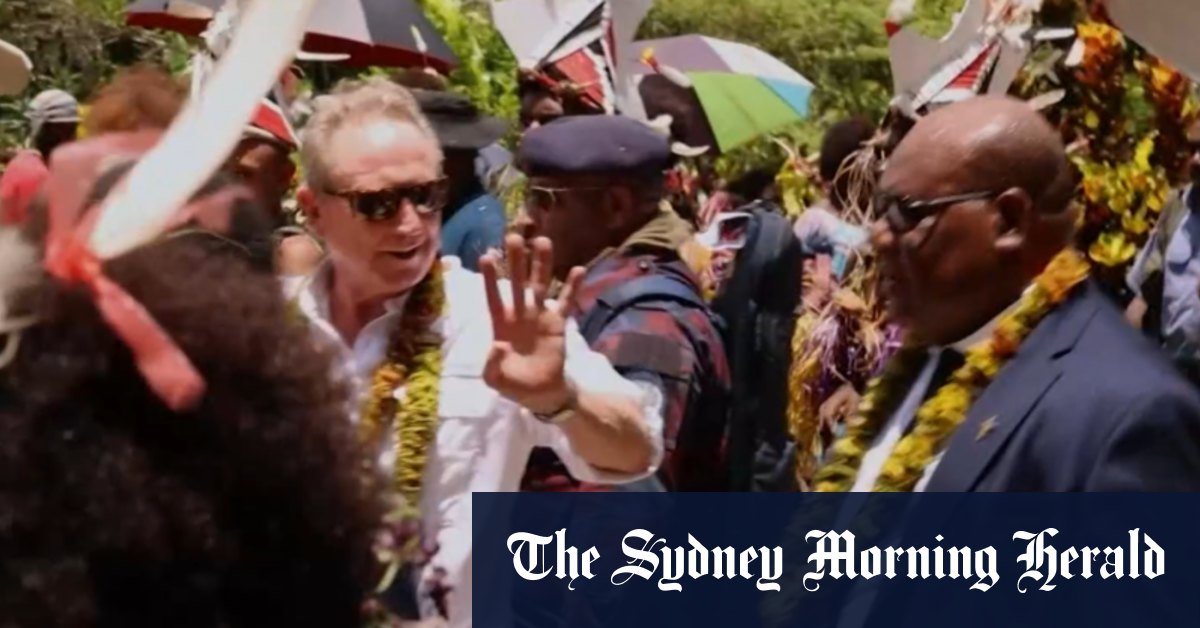Australia
WWII war memorial unveiled after Andrew Forrest-led expedition discovery

Unveiling the Memorial: A Tribute to Fallen Heroes
In a poignant ceremony held in Gasmata, Papua New Guinea, a WWII war memorial was unveiled, marking a significant moment in history. This event was made possible by an expedition led by Australian billionaire Andrew Forrest, who spearheaded the discovery of the final resting place of Australian airmen killed during World War II. The memorial stands as a testament to the sacrifices of these brave servicemen and serves as a symbol of remembrance and honor. The unveiling brought together families of the deceased, local communities, and historical enthusiasts, all united in their respect for the past.
The Discovery: Andrew Forrest’s Expedition
Andrew Forrest, known for his philanthropic efforts and dedication to historical preservation, led an expedition that culminated in the discovery of the airmen’s remains. Forrest, a prominent figure in Australian business and philanthropy, was driven by a commitment to uncovering the truth and providing closure for the families of the fallen. The expedition faced numerous challenges, navigating through dense jungles and harsh terrain, but their perseverance paid off. This discovery not only shed light on a forgotten chapter of WWII but also highlighted the importance of remembering and honoring those who served.
The Historical Context: WWII in Papua New Guinea
During WWII, Papua New Guinea became a crucial battleground in the Pacific Theater, with Australian forces playing a significant role in defending against enemy advances. The airmen whose remains were discovered were part of a contingent that faced immense challenges, from harsh weather conditions to relentless enemy fire. Their sacrifices were pivotal in the Allied victory, yet many stories of their bravery remained untold. The discovery and unveiling of the memorial bring these heroes back into the spotlight, ensuring their contributions are remembered and celebrated.
The Memorial’s Significance: Honoring the Fallen
The memorial in Gasmata is more than just a structure; it is a symbol of gratitude and remembrance. Designed to reflect the respect and admiration for the fallen airmen, it stands as a permanent tribute, ensuring their memory endures. The memorial’s design incorporates elements that reflect the region’s history and the airmen’s sacrifices, serving as a focal point for reflection and education. It not only honors the past but also educates future generations about the significance of their ancestors’ contributions.
The Families’ Reaction: Closure and Connection
For the families of the airmen, the unveiling of the memorial was a deeply emotional experience. Many had lived with uncertainty and grief, not knowing the fate of their loved ones. The discovery brought closure, allowing them to finally lay their relatives to rest with dignity. The presence of the memorial provides a tangible connection to their past, offering solace and a sense of pride in their loved ones’ service. The ceremony was a moment of healing and connection, bridging the gap between the past and present.
Conclusion: Preserving History and Memory
The unveiling of the memorial in Gasmata highlights the importance of preserving history and remembering those who have served. It serves as a reminder of the sacrifices made during WWII and the enduring impact on families and communities. As efforts continue to restore access to historical features, the memorial stands as a powerful symbol of remembrance. It encourages future generations to learn from the past and honor those who have shaped our world. The discovery and dedication of this memorial ensure that the stories of these Australian airmen will never be forgotten.